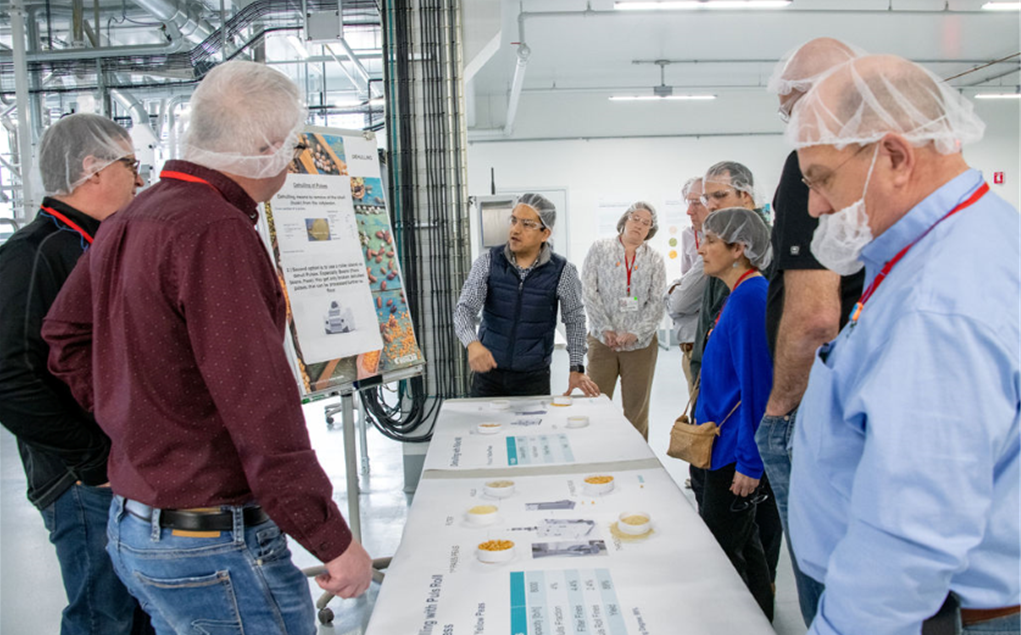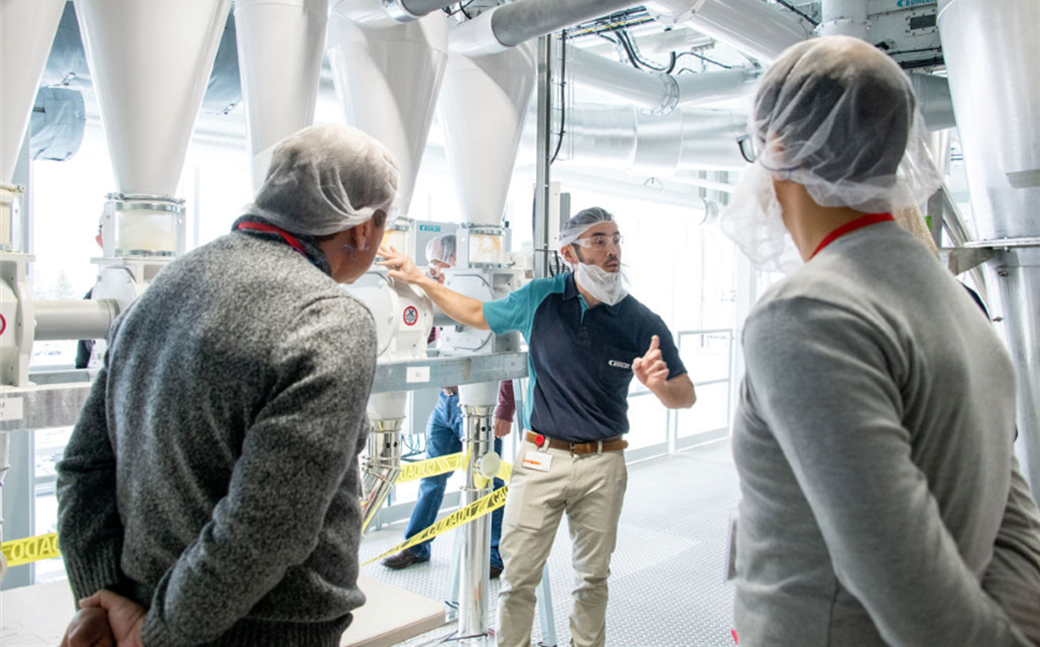The Canadian pulse industry has adopted a market development strategy of 25 by 2025, which aims to shift 25% of Canadian pulse production to new use markets by 2025, led by Pulse Canada. Pulse Canada is the national industry association for pulses in Canada and Saskatchewan Pulse Grower’s (SPG) partnership with Pulse Canada is central to build and diversify demand for Saskatchewan growers. A key part of this strategy is work with both ingredient processors, and food manufacturers to increase both the availability and demand for pulse flours. Thanks to strong growth in the plant-based foods trend pulse flours (ground from whole seed) have a place as an ingredient option and will play a part in increasing pulse demand.
In March 2020, Pulse Canada partnered with Buhler, a leading supplier of equipment and processes to mill, grind, and flake food and feed products, and the USA Dry Pea & Lentil Council to co-host the Pulse Flour Summit in Minneapolis, an event dedicated to pulse flours and their food applications. During the program, participants experienced the pulse milling process up close at Buhler’s newly launched state-of-the-art pulse milling facility. The event attracted 80 attendees from the North American food industry of which 50% were from ingredient companies which signifies the level of interest in pulse flours.
“In order to help facilitate the 25 by 2025 goals of increased tonnes of Canadian pulses being moved into processing and food markets, this requires that the knowledge base on how to process pulses be created,” says Amber Johnson, Director, Marketing and Communications with SPG.
“Events such as this one with Buhler will hopefully translate into more Canadian pulses being milled and used in food products. This work is an important component of SPG’s strategy, creating new demand opportunities and markets for Saskatchewan growers and their crops.”
The Canadian pulse industry has set a 2 million tonne target for pulses to be put into domestic usage as part of the 25 by 2025 strategy. About 35% of that goal (approximately 685,000 tonnes) is in the form of pulse flours.
The event was targeted to the North American food and ingredients industry and was structured as a crash course on pulse flours. The intent of the event was to be able to distinguish between different types of pulse flours and their unique properties, the technologies used to make them, and the reasons why pulse flours should be added to food (ex. to increase nutrition, functionality, and sustainability).
Pulse flour sales are estimated to double by 2025 to a conservative value of $25 billion. Euromonitor International, a market research company, explains that the pulse industry is poised for growth as Generation Z has been born into an already plant-forward world and has put increased prioritization on health and wellness. There is a significant opportunity for the pulse industry to address information needs to meet this growing demand for pulse flours.
“Partnership with Buhler and the launch of the pilot facility is instrumental as we continue to establish a baseline of flour processing knowledge that enables companies to customize and scale operations,” says Tanya Der, Director, Food Innovation & Marketing with Pulse Canada.
Pulses and their ingredient formats have many nutrition and health benefits that can be promoted in different products on a global scale. By hosting a processing event at the new Buhler facility, the anticipated outcome is that more processors and food ingredient companies will begin incorporating more pulse flours into their food products, which will enable innovation and increase market demand for Canadian grown pulses.
“Events such as the Pulse Flour Summit provides the resources and connections so that companies can be better equipped to work with clients to formulate foods and create that consistent stream of pulse flour supply,” says Der.

ingredients.
Companies left the event with more knowledge than they came in with— but it does not stop here.
The pulse industry will keep the momentum going by continuing to share knowledge on the best ways to unlock the full potential of pulses. New resources in the pipeline include a launch of a white paper series outlining technical considerations when adding pulse flour to foods, sustainability assessment of pulse-cereal flour blends, and research on new approaches to pulse flour milling.
Published June 2020



